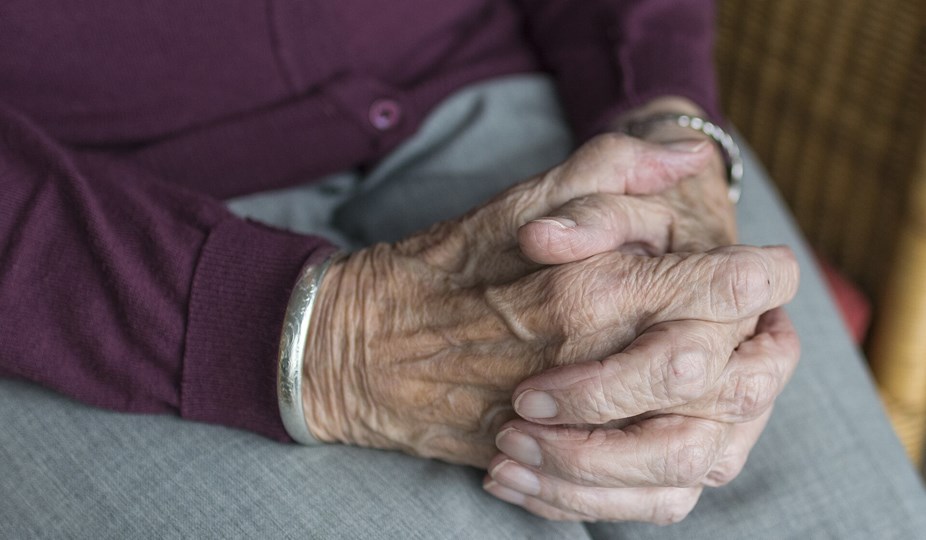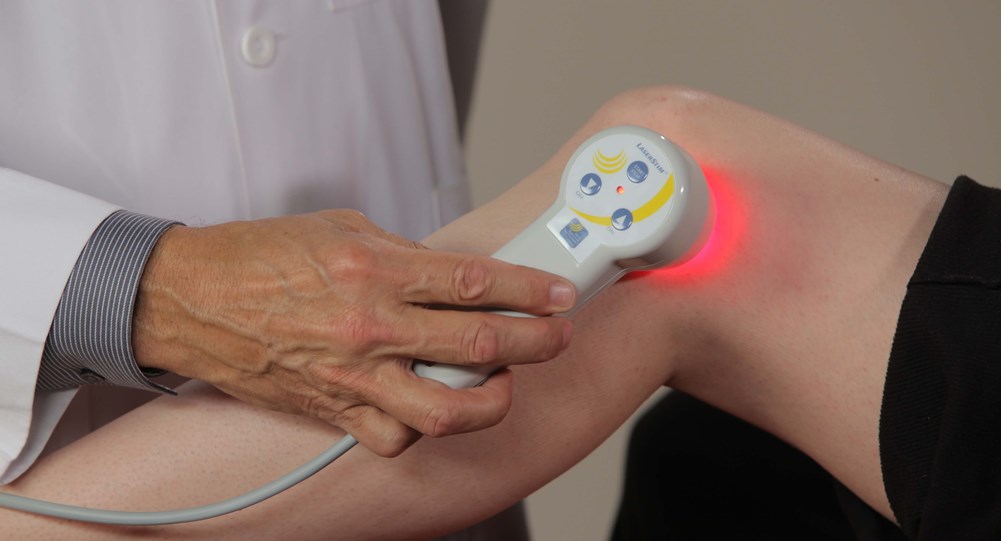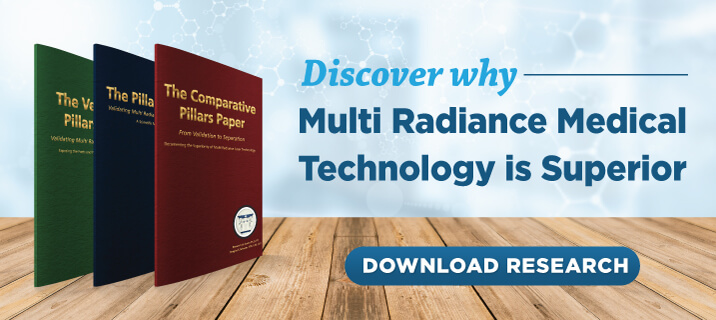Lighting Up Life: Managing Arthritis Pain with Non-Invasive Low-Level Laser Therapy
Thursday November 9, 2017

The Center for Disease Control and Prevention reports1 that arthritis affects 54.4 million adults. This staggering statistic makes it one of the most common causes of disability for persons in the United States. Arthritis is a broad overarching category that can be used to refer to instances of joint pain or disease. It covers over 100 different manifestations and related conditions, the most common of which are osteoarthritis (OA) and rheumatoid arthritis (RA). Arthritis can affect anyone of all races, ethnicities and age groups. It is most prevalent in persons ages 65 or older, affecting nearly half of this population, and affects more women than men.
What are the symptoms of arthritis?
Symptoms may vary depending on the type of arthritis the patient has; the most common symptoms patients experience are:
- Aching
- Decreased range of motion
- Pain
- Redness
- Stiffness
- Swelling in or around the joints
How was arthritis treated in the past?
Treatment plans typically included any, or a combination of, the following: medication, surgery, or activity restrictions. Treatments with analgesics (acetaminophen), non-steroidal anti-inflammatory drugs (NSAIDs) (ibuprofen and diclofenac), and COX2 inhibitors (Celebrex) have significant risks of adverse effects, such as gastrointestinal bleeding with NSAIDs and myocardial infarction with COX2 inhibitors.
Risks of Nonsteroidal Anti-Inflammatory Drugs (NSAIDs)
- Edema (swelling of the feet)
- Heartburn
- Stomach upset and stomach ulcers
- Possible increased risk of blood clots, heart attack and stroke
Risks of Corticosteroids
- Cataracts
- Elevated blood fats and blood sugar levels
- Increased appetite
- Bone loss
Recent advancements in modern technology have demonstrated the beneficial effect of light on arthritic joints. Low level laser therapy was introduced as an alternative non-invasive treatment for RA and OA about 10 years ago. The application of non-invasive, drug-free light has provided reduction in swelling, inflammation and pain to affected joints.

What is Low Level Laser Therapy?
Low level laser therapy (LLLT) or Photobiomodulation (PBM) is like photosynthesis in plants: a means of creating usable cellular energy by the absorption of light by photosensitive organelles. The anti-inflammatory effects of LLLT have been reported as significant reductions in inflammatory cell infiltration and inflammatory cytokines 24 hours later. A lower laser power was more effective than a higher laser power.2
Research demonstrates the effectiveness of a combined medication and light therapy for reduction of arthritis symptoms. A significant long-term study performed by Antipa C. et al.3 looked at patients with either rheumatoid or non-rheumatoid diseases. For five years, they recorded the efficacy of laser therapy by comparing groups of patients that received anti-inflammatory medication against a placebo laser control group and two groups with laser therapy. The results showed that the combined laser group did, in fact, have equal to or better results than anti-inflammatory therapy alone. This is conclusive to the suggestion that laser therapy should be incorporated as an adjunctive therapy for patients with arthritis to significantly reduce their pain.
Laser Therapy Treatment Plans
In general, the following clinical guidelines should be considered when applying LLLT to any type of arthritic joint:
- Smaller doses, in the range of 1-2 minutes with 5-250 Hz or 8-12 J should be given initially
- More frequent doses generally provide better outcomes
- General stimulation of the blood or photohemotherapy (PHT) should be included to provide additional beneficial effect. 50 Hz for 5 minutes or 30 J to the proximal artery of affected joint is the target location
- After symptoms have been abated, treatment should be done on an as-needed basis and/or done preventatively to minimize outbreaks
Light therapy has been used successfully to treat arthritis and other types of pain for decades. PBM works by improving energy production in joint cells, which lowers inflammation and normalizes function. LLLT should be considered for short-term relief of pain and morning stiffness, particularly since it has no known side effects
Sources
- https://www.cdc.gov/arthritis/data_statistics/arthritis-related-stats.htm
- Hamblin, M. R. (2013). Can osteoarthritis be treated with light?. Arthritis research & therapy, 15(5), 120.
- Antipa C. et al. Comparative effects of various IR low engergy diodes in the treatment of the rheumatic diseases In press (Monduzzi Editore, Bologna)


